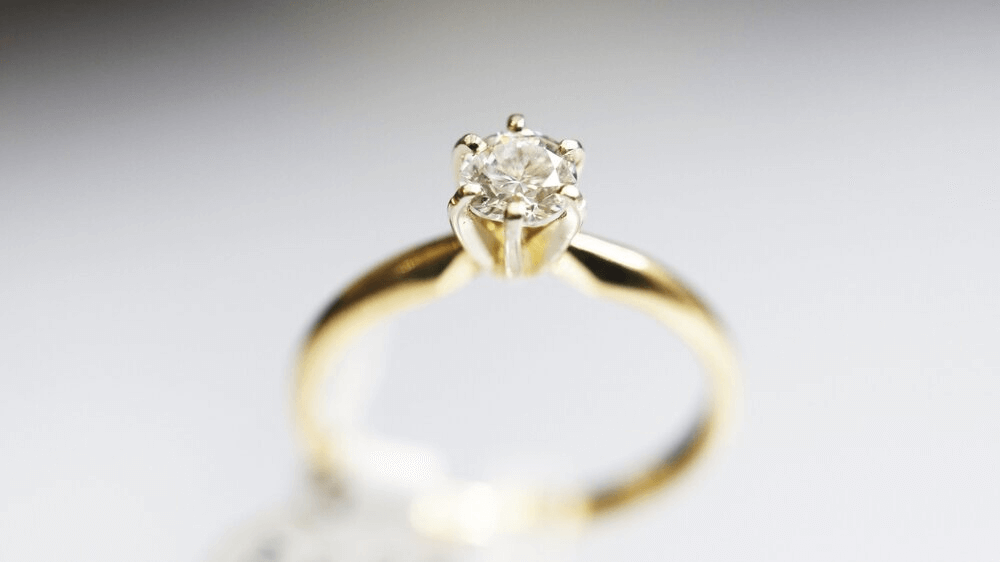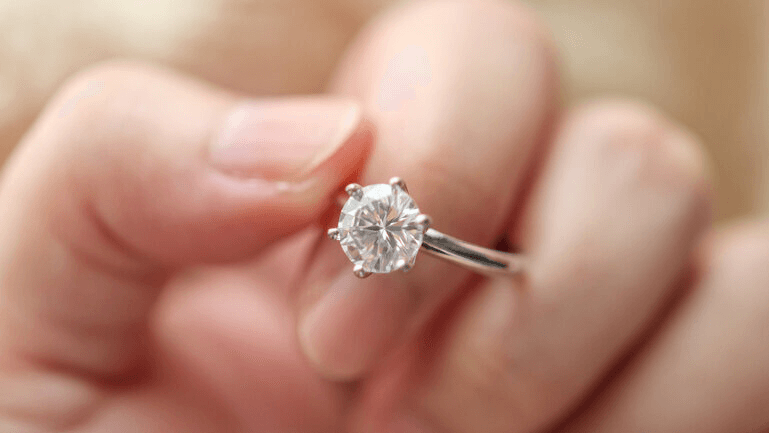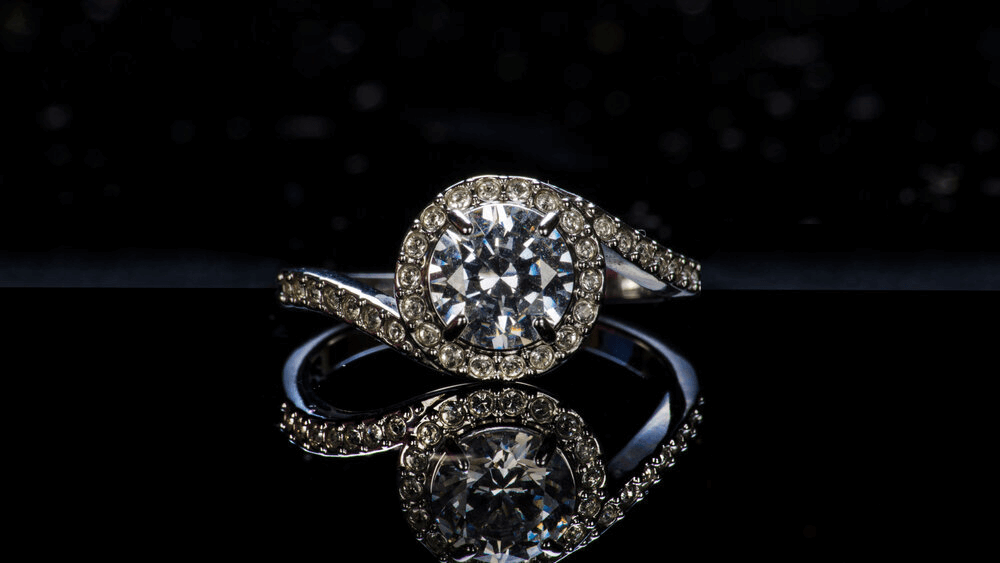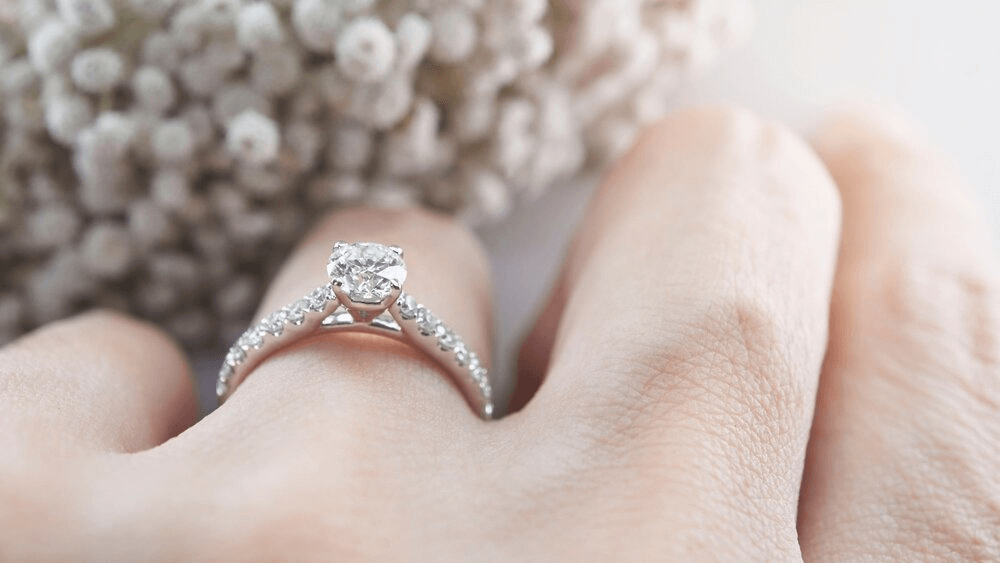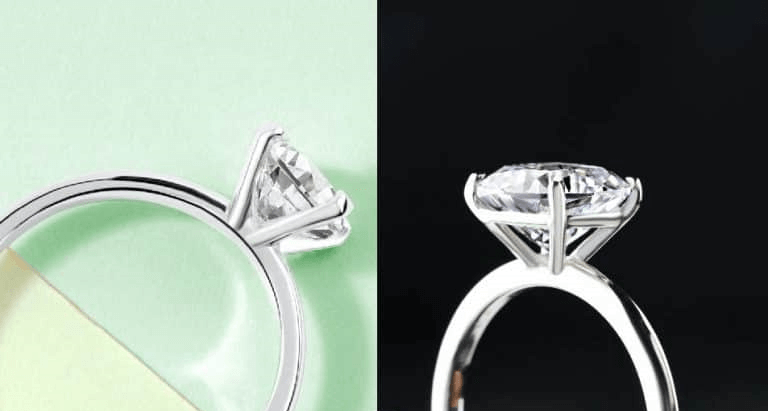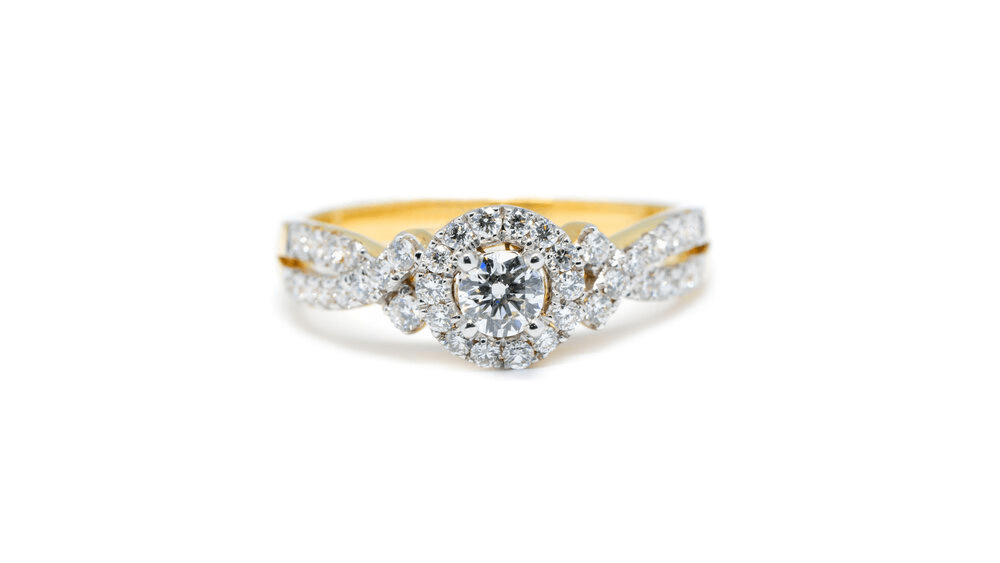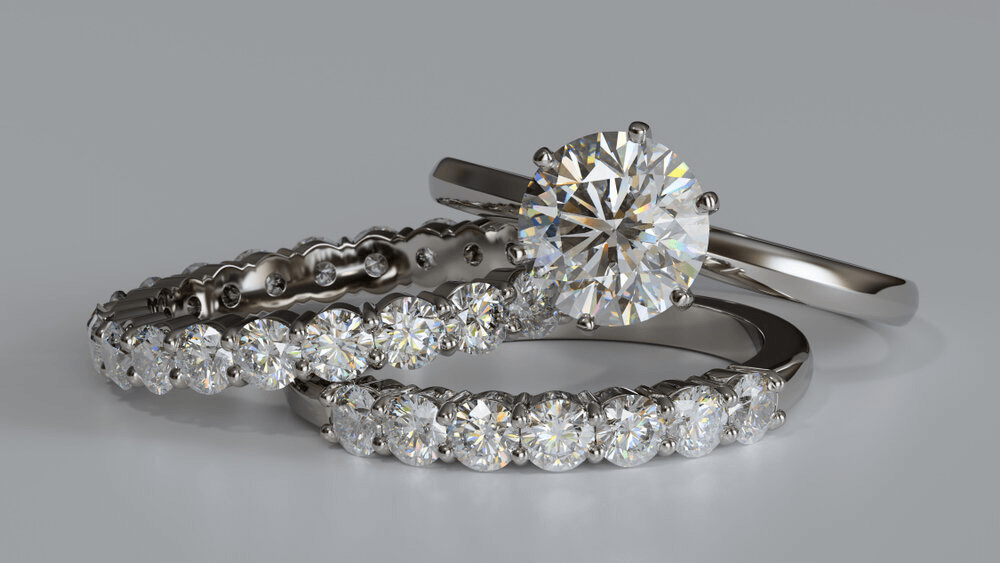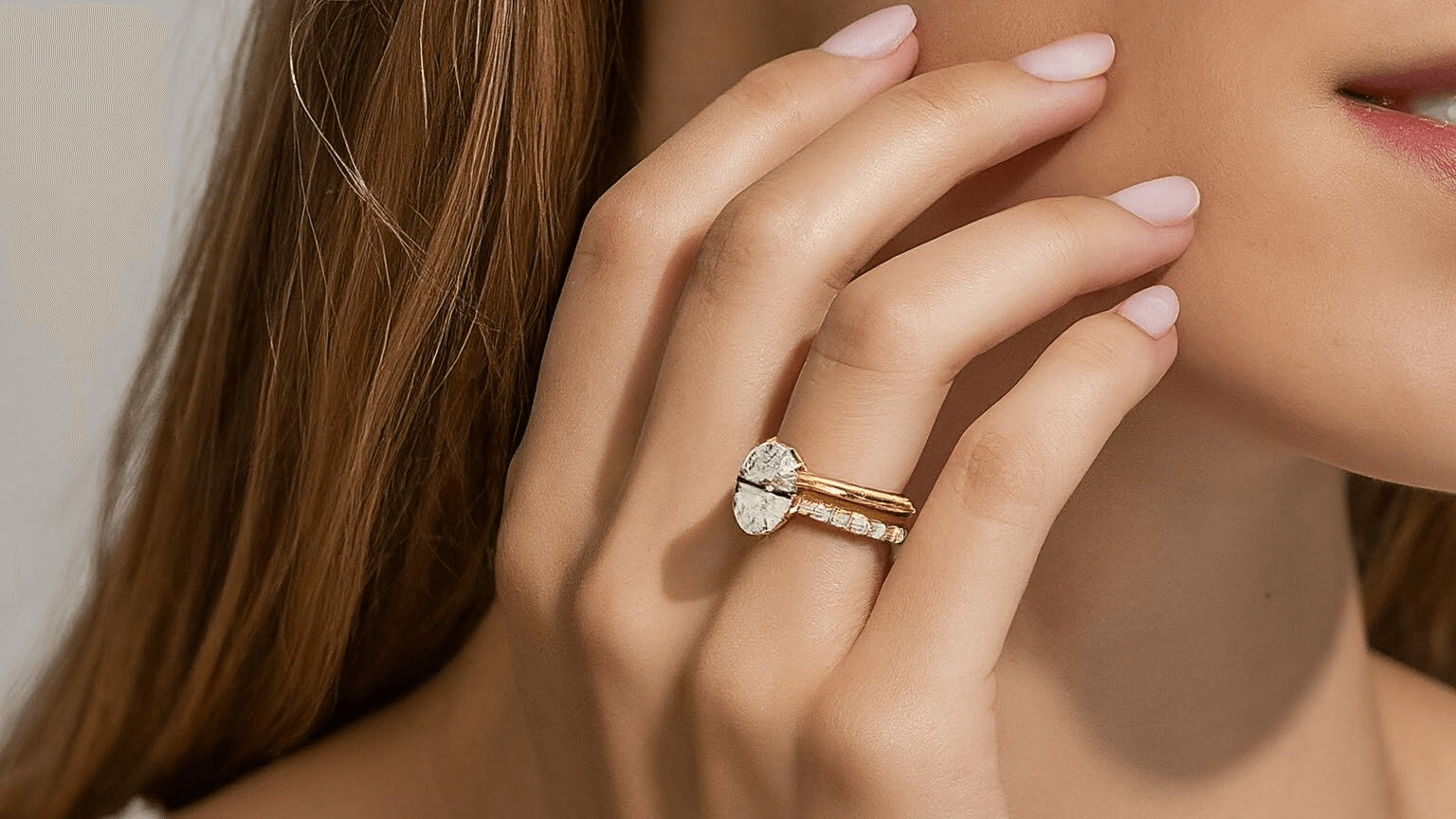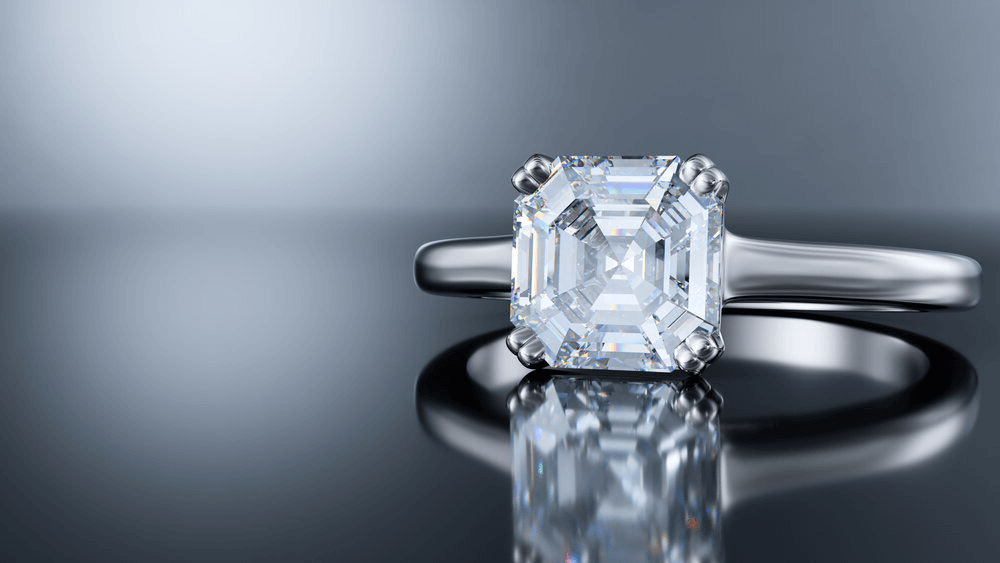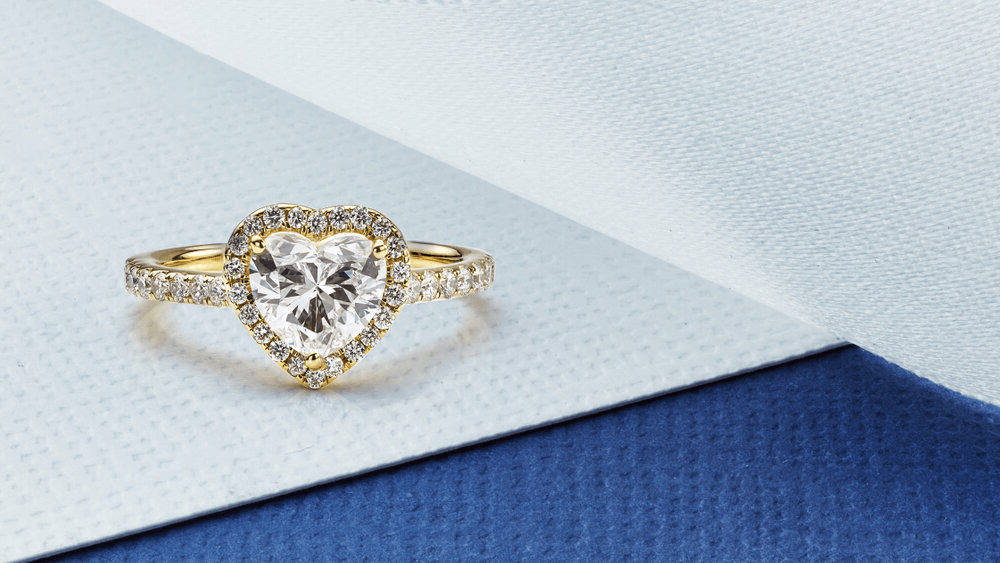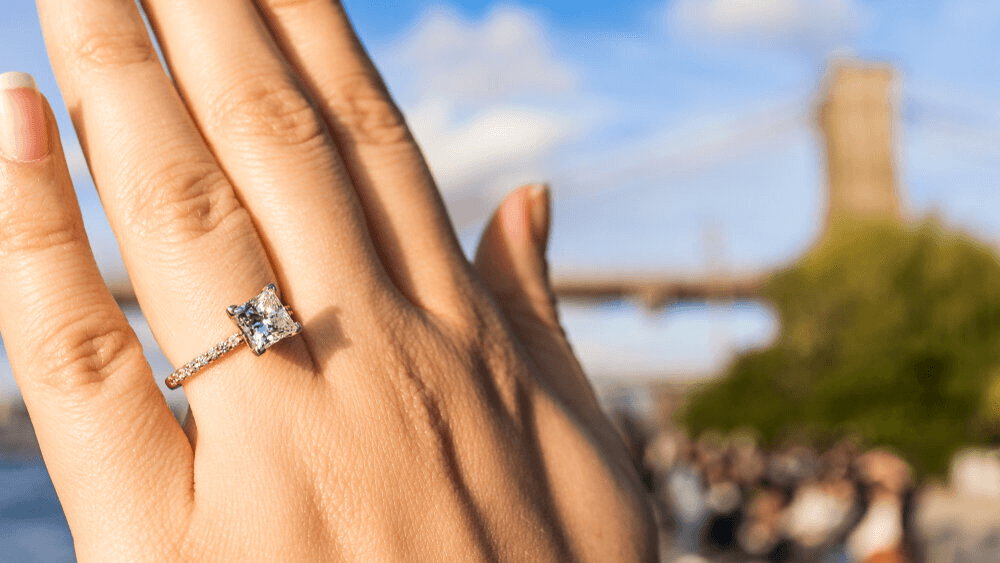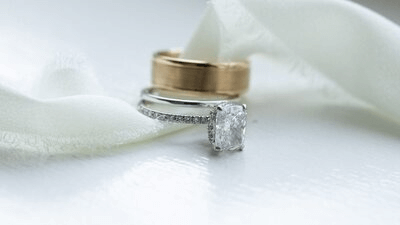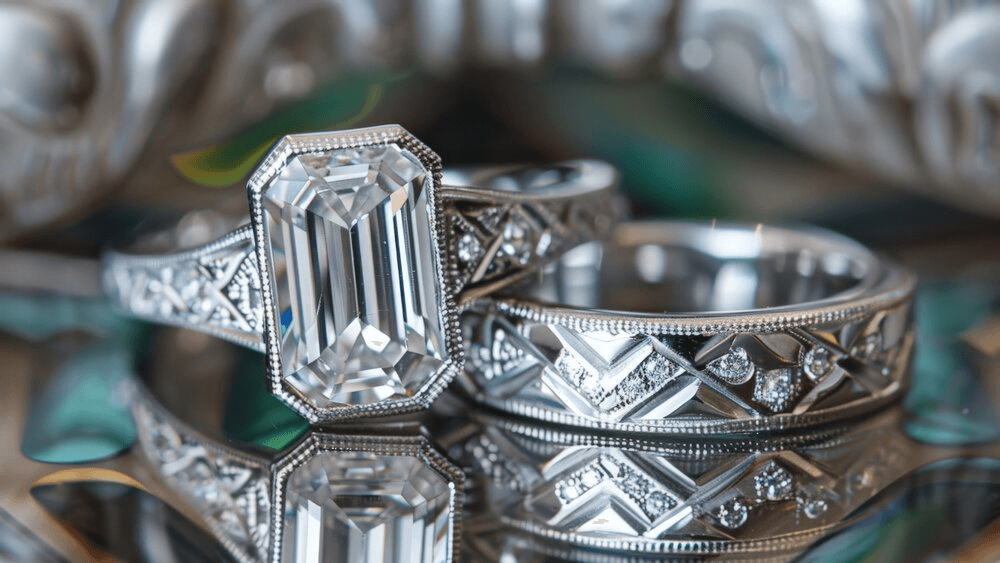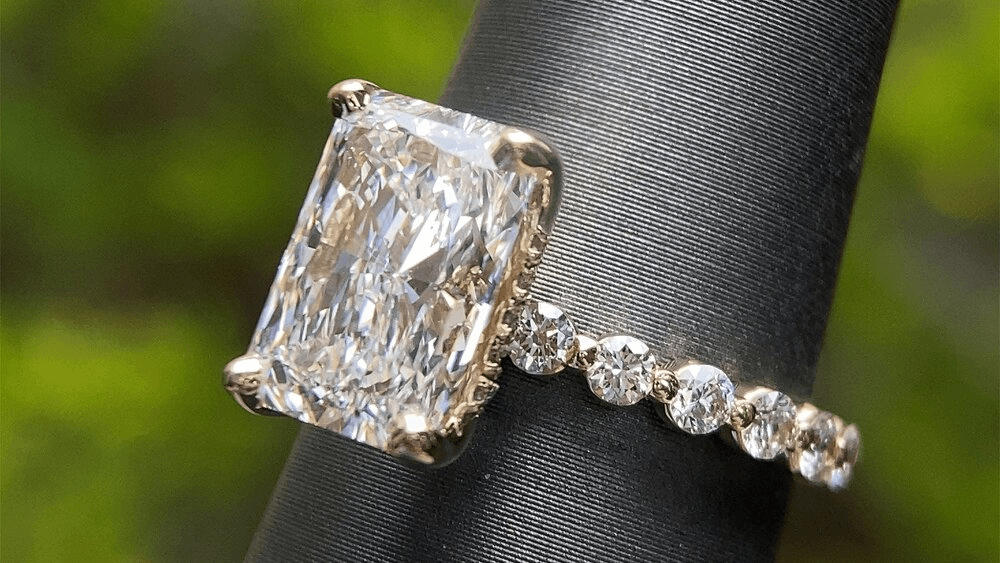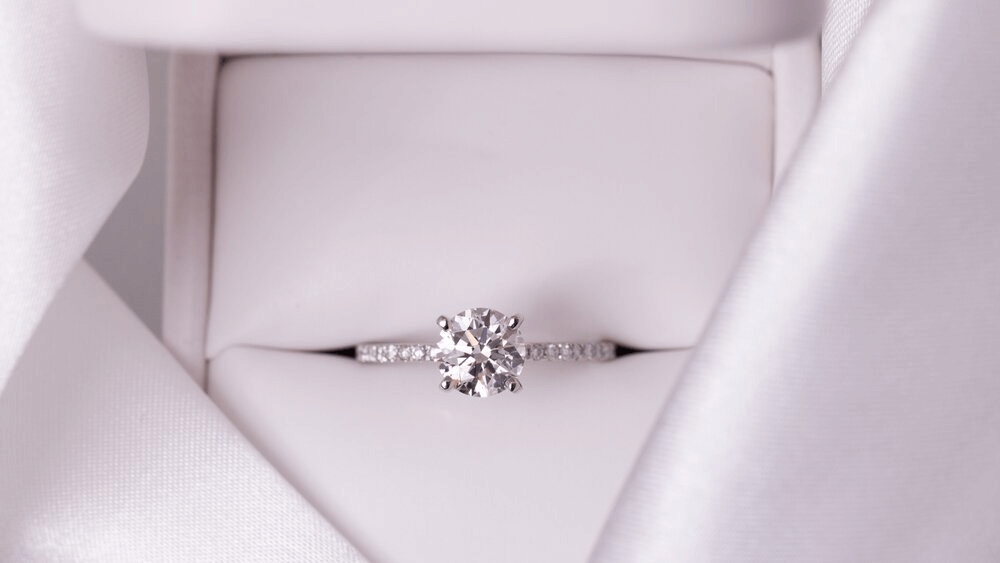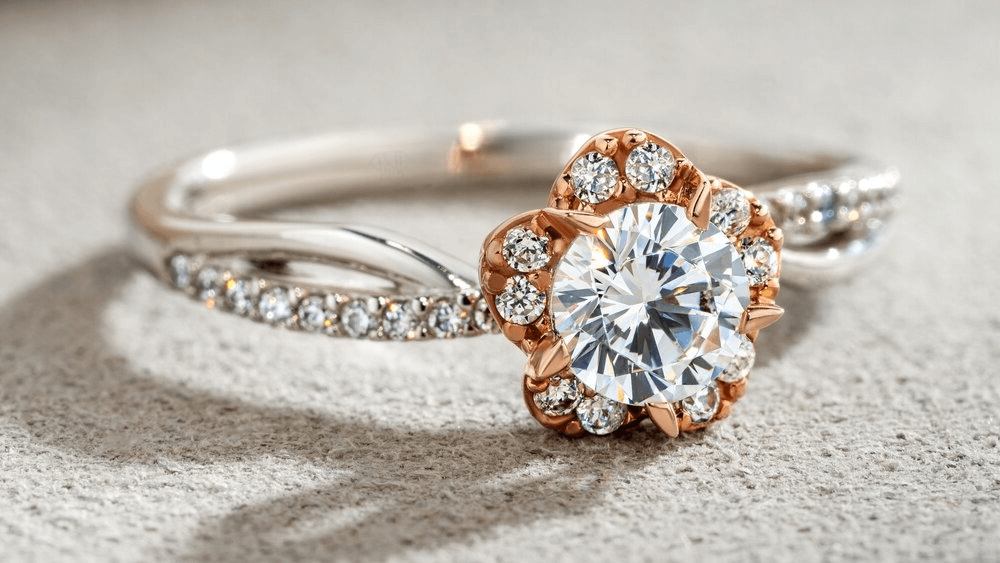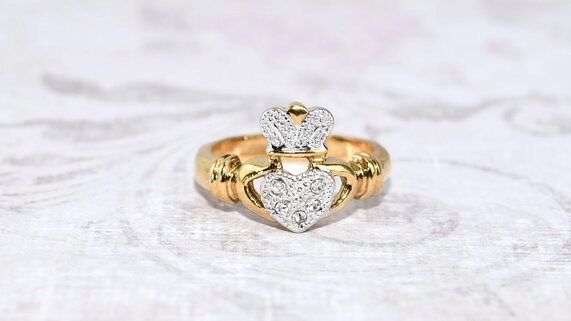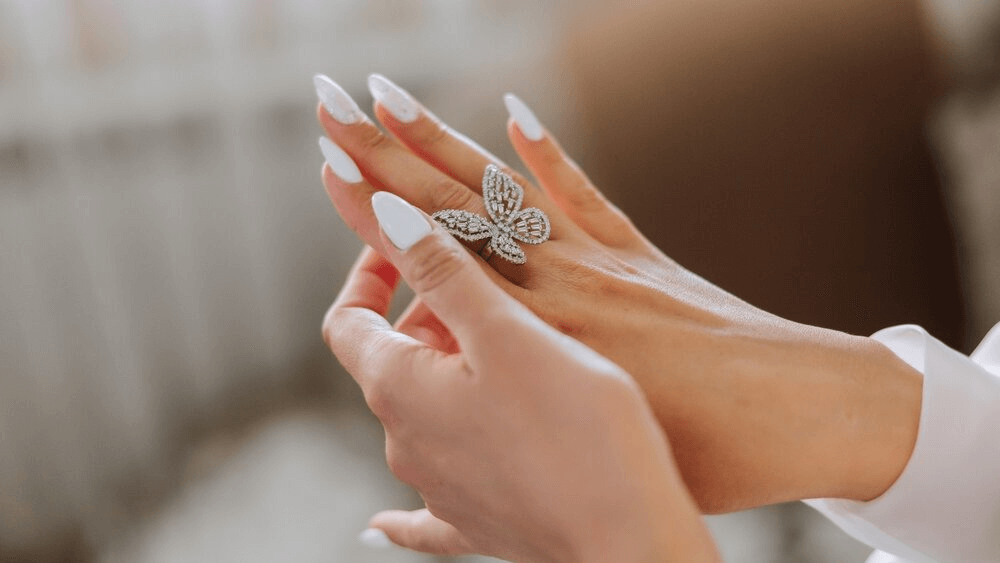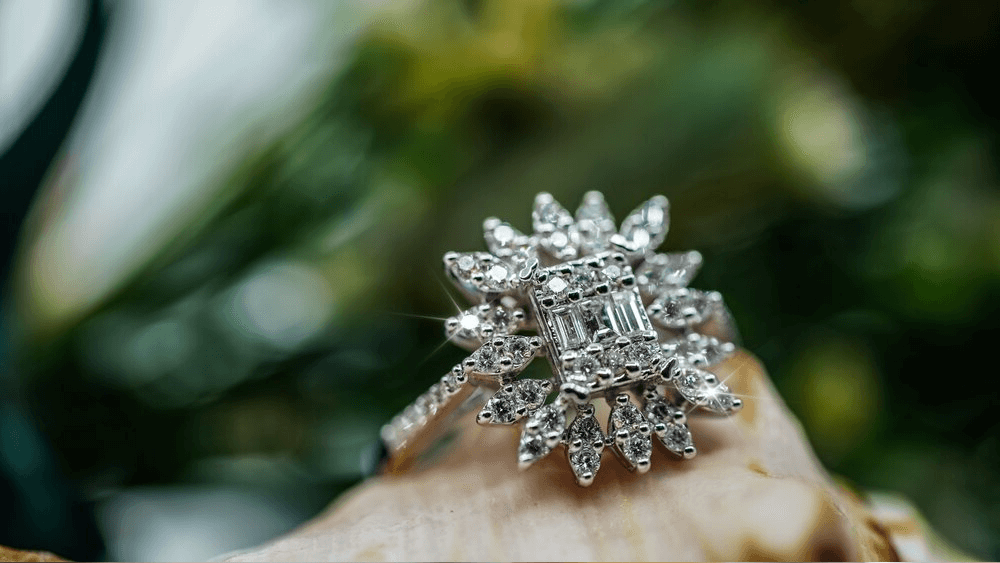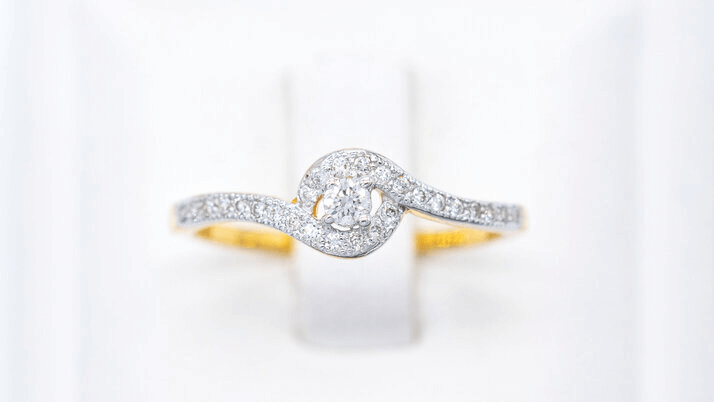Craze: Vintage & Antique Engagement Ring You Can’t Miss

By Gary A.

Edited by Olivia H.
Published Aug 17, 2021
Edited on Mar 31, 2025
When it comes to capturing the charm of the past, vintage & antique engagement rings bring a timeless elegance that makes every proposal feel like a story from another era – could one of these rings be the perfect fit for you?

Navigate This Guide:
- 7 Quick Tips for Buying a Diamond Vintage Engagement Ring
- Introduction
- The Allure of Vintage
- Exploring Vintage Ring Settings
- The Pros and Cons of Vintage & Antique Engagement Rings
- Classic Charm: Old Fashioned Engagement Rings
- Cost Considerations: Vintage Engagement Rings
- Our Expert Take
- 7 FAQs
Before we dive deeper into the specifics, here are some practical tips to help guide your decision-making process:
7 Quick Tips for Buying a Diamond Vintage Engagement Ring
When purchasing a diamond vintage engagement ring, it’s essential to focus on both the diamond and the setting to ensure you’re getting a piece that’s not only beautiful but also a wise investment. Here are key tips to consider:
- Tip 1: Examine the Setting’s Condition: Inspect for Wear and Damage: Vintage rings often come with a history, which can include wear and tear. Check for any signs of damage or repairs in the setting, such as weakened prongs or bent metal.
- Tip 2: Assess the Diamond’s Quality: Look Beyond the 4Cs: While the 4Cs (Cut, Color, Clarity, Carat) are crucial, vintage diamonds may not have modern cutting styles. Evaluate the diamond’s brilliance and fire, which can differ significantly from contemporary cuts.
- Tip 3: Research the Ring’s Era: Understand Historical Styles: Each vintage era (Victorian, Edwardian, Art Deco) has distinct design features. Familiarize yourself with these characteristics to ensure authenticity and better appreciate the craftsmanship.
- Tip 4: Check for Hallmarks and Stamps: Identify Maker’s Marks: Authentic vintage rings often have hallmarks or stamps indicating their origin, metal content, and sometimes the jeweler’s mark. These can provide clues about the ring’s history and authenticity.
- Tip 5: Evaluate the Ring’s Size and Alterability: Consider Resizing Options: Vintage rings may need resizing. Some settings and styles are easier to adjust than others without compromising the ring’s integrity. Check if resizing is possible without damaging the setting.
- Tip 6: Look for Symmetry and Balance: Symmetry in Design: For settings with intricate designs, ensure that the pattern is symmetrical and balanced. This is a sign of skilled craftsmanship and adds to the ring’s aesthetic appeal.
- Tip 7: Understand Maintenance Needs: Anticipate Care Requirements: Vintage rings might need more care compared to new ones. Be aware of the maintenance they require, especially if they have delicate filigree or older diamond cuts that may be more vulnerable to damage.
Now that you’ve got these practical tips, use Jeweler AI below to find the perfect engagement ring that suits your style and budget:
Introduction
When it comes to engagement rings, history is pretty hard to shake – not that most of us would want to turn our backs on it entirely. Some of the most popular designs today feature styles and design elements that are considered classics within the jewelry world.
Take the most traditional shape of all: the classic solitaire diamond setting. This familiar shape has been worn on the fingers of women around the world for more than five hundred years.
Alternatively, look at the far more contemporary looking flush setting engagement ring – a style first created in Victorian England, but traveling nobles looking to conceal their jewels.
In other words, every style popularized today has its own backstory and, often, that backstory branches far back into history. We do, however, mean something much more specific when we talk about vintage engagement rings…
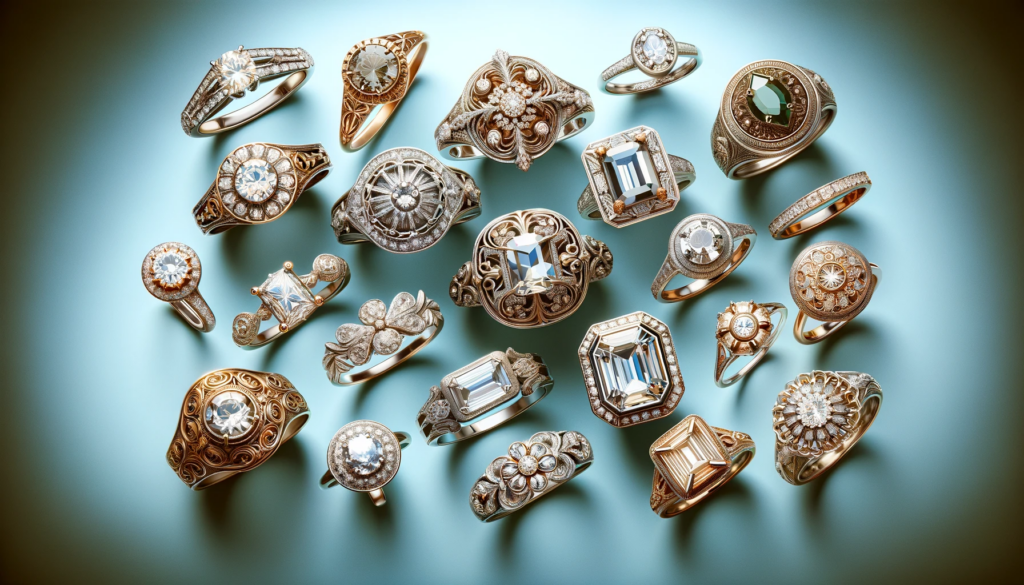
The Allure of Vintage
A vintage engagement ring may be one that is genuinely old – older than around fifty years – or one that is intentionally designed to resemble an antique.
Exploring Vintage Ring Styles
The term ‘vintage’ is pretty subjective. In all likelihood, most people searching for vintage engagement rings these days will be looking for new rings designed according to older and more traditional styles. This might mean the romantic filigree and intricate borders of a ring inspired by Victorian tastes, or the stylized geometrics and sunrays of the 1920’s Art Deco period.
These two examples are great for demonstrating how broad the term ‘vintage’ really is. It covers almost every style imaginable, and gives the jeweler the scope to use all those features in one ring, or design something that is most subtly inspired by one of history’s trends.
Why Vintage?
These rings may be from the mid-century or earlier and, in all likelihood, will be second hand. Some couples value the long and largely unknown histories behind these rings – and, of course, the craftsmanship that went into them.
There is definitely something romantic about presenting your bride-to-be with a piece of history, whether real or simply inspired, but, just like any diamond ring buyer, there’s a few things you should know first.
Exploring Vintage Ring Settings
Whether you’re a history buff or an old romantic at heart, there is no denying the allure of a genuine antique.
The Romance of Victorian Rings
The Victorians were true romantics at heart. From floral-inspired embellishments to vibrantly colored accent stones, elaborate metalwork and hidden touches like initials engraved within the shank, their love of extravagant romance and artistry is evident in jewelry that survives from the era. For the ultimate in fairytale design, focus your search on Victorian rings.
Decoding the Art Deco Era
Art Deco is one of those ever-popular styles of art, design, architecture and jewelry that never seems to fall out of fashion. Characterized by geometric shapes – think Emerald and Asscher cuts – and a very elegant style of decadence, Art Deco has inspired some of the most revered engagement rings of all time.
Edwardian Elegance
The Edwardians loved their filigree, fleur de lis, and floral silhouettes. From flower settings to designs that emphasize skillful metalwork, rich colors, and elevated center stones, Edwardian jewelry is a great option for the vintage-loving fiancee.

The Pros and Cons of Vintage & Antique Engagement Rings
While these rings are high quality, the methods behind them differ from what we expect jewelers to do today.
If you’ve been seduced by the idea of helping to continue a ring’s legacy, and becoming a part of its long history, then it can be pretty hard to shake that off for anything. However, a genuine antique does present its own challenges.
For starters, it may be worn or slightly damaged in some way. Well-crafted rings are strong and durable, but decades of wear will inevitably begin to show. Some TLC from a good jeweler can go a long way, but it’s important to prepare for this possibility in order to avoid disappointment.
More importantly, these rings were created using tools and techniques that, over the years, jewelers have been able to build on, improve, hone and perfect. For instance, the art of diamond cutting has been in continuous development for centuries, meaning that there is a lot of difference between a diamond cut fifty or a hundred years ago, and a diamond cut today…
The Downsides to Old Diamonds
On the whole, no. Old diamonds are intrinsically tied to old methods. While they offer fascinating snapshots of history, they do not often live up to modern expectations.
Today, the edges are cleaner, the facets are more symmetrical, and, most importantly, the diamonds are cut far more strategically so as to maximize clarity, whereas older diamonds tend to feature more inclusions and blemishes that, on the whole, the modern buyer would rather not pay to see.
Modern diamonds are cut to sparkle as much as possible, which means that most modern buyers risk being disappointed by an antique diamond. And, while the craftsmanship and skill behind an antique ring setting is bound to be breathtaking, we all know that the diamond is the focal point – one that can’t be ignored.
The Risks of Resizing Antique Engagement Rings
Provided the ring’s design doesn’t make it impossible for a jeweler to resize the band without causing issues for symmetry, or the ring’s structural integrity, you can resize an old ring.
As with any piece of jewelry, you’ll want to make sure you buy through a reputable store and ensure the ring is sized to perfection to start with.
However, if the ring’s band is plain, then resizing it should be relatively simple. Keep in mind that, as a rule of thumb, a jeweler can only add or remove around two ring sizes. If the size difference is more significant than that, then redesigning a new setting may be the only option – a jeweler will be the best person to give advice in this instance.
If the shank features any intricate design work – such as filigree or pavé – then the process of resizing it becomes a lot more complicated. Removing a section of the band – or adding extra metal into it – can disrupt the design, ruin the ring’s symmetry, and cause lasting damage.
A good jeweler won’t get far enough into the process to cause lasting damage, but it’s important to manage your own expectations before you take this option.
Classic Charm: Old Fashioned Engagement Rings
These styles offer the ideal compromise between traditional design and era-specific detailing, and modern techniques and tools which ensure the perfect finish for your ring.
The Most Traditional Shape
The round cut has been a staple of the world of fine jewelry for hundreds of years, but keep in mind that it may not be the most era-specific.
Each diamond cut has its own fascinating history. The round cut was created by an academic in 17th century London, looking to find ‘mathematical perfection’, and has endured as the most popular cut for many, many generations of brides and grooms.
Still, other cuts are highly evocative of particular periods. The emerald cut, while centuries old, rose to prominence in the mid-century, with Princess Grace Kelly of Monaco’s famous engagement ring now representing an entire era.
Alternatively, the more intricate cushion cut diamond represents a living memory of the much, much older ‘mine cut’ diamond, highly coveted throughout the 17th and 18th century.
Each diamond cut has the power to call to mind a specific point in history, particularly when it is placed within a classic engagement ring setting. Investing in a new diamond, however, means that you will be able to take advantage of modern tools and techniques that ensure a perfect cut that lasts many generations to come.
The Most Classical Engagement Ring Setting
The solitaire diamond, featuring a round cut and a gold band, is intrinsically tied to the history of the engagement ring. Still, some more ornate touches can place your engagement ring more definitively within a certain point in history.
Vintage engagement rings tend to be incredibly intricate. This twisted pavé yellow gold engagement ring, for instance, turns the shank of the ring into its own focal point. Coupled with the marquise cut diamond (commissioned by King Louis XV in the 1700s), the ring alludes to that 18th century brand of decadence that stands as the total opposite to today’s more minimalist styles
If you’re looking to adopt the more geometric patterns of the 1920s and 1930s, then consider many smaller, emerald cut diamonds housed in a channel setting.
Alternatively, try to do a bit of research about the more antiquated techniques, such as filigree, which can be used to create highly complex and floral shapes along the shank.
Still, as we mentioned above, nothing will ever unseat the classic, understated design of a solitaire diamond on a plain band. This is an excellent choice if your bride-to-be is traditional, but more interested in keeping things simple and not era-specific.
Diamonds have been beguiling us for hundreds of years; keeping it simple and making your engagement ring all about the diamond is about as classic as it gets.
Cost Considerations: Vintage Engagement Rings
Anywhere from around $5,000 to much, much more. A vintage diamond ring will likely come at a higher cost than most, but it’s a cost that is more than worthwhile when you walk away with a unique and beautiful ring.
Working out how much money you should spend on your engagement ring is a pretty personal decision, but the two most important factors to consider are the diamond, and the level of craftsmanship that will go into your setting. Larger diamonds come at a premium, and so does the time spent in designing it, so aim to be realistic from the start.
The cost of genuine antiques will generally be higher than the sum of their parts, as they are one-off pieces that are prized for their historical and sentimental value, as much as their individual parts. For some, this additional cost is more than worthwhile – but, if you’re looking to make the most out of your budget, then we’d always recommend investing in a new diamond cut and setting according to modern techniques. That way, you can create your own piece of history.
Our Expert Take
Antique and vintage engagement rings are beautiful and hugely sentimental, but they’re not always the best choice. Vintage-inspired ring designs are just as beautiful, and they’re often made with higher quality tools, techniques, materials – and more ethically sourced diamonds, too.
7 FAQs
- Q: What Makes a Ring ‘Vintage’?
A: A ring is typically considered ‘vintage’ if it is 20 to 100 years old. It should represent the style and trends of the era it was made. - Q: How Can I Tell the Age of a Vintage Engagement Ring?
A: The age can often be determined by the ring’s design, hallmark, and craftsmanship. Each historical period, like Victorian or Art Deco, has distinctive styles. - Q: Are Vintage Rings More Expensive Than New Ones?
A: It varies. Some vintage rings are more affordable due to their age, while others are more expensive due to their rarity, craftsmanship, and historical value. - Q: Can Vintage Rings Be Resized?
A: Many vintage rings can be resized, but it depends on the design and material. Some intricate patterns or delicate settings might be challenging to alter. - Q: How Do I Care for a Vintage Engagement Ring?
A: Careful cleaning with mild soap and water, avoiding harsh chemicals, and regular check-ups with a jeweler are essential to maintain its condition. - Q: Is It Safe to Buy Vintage Rings Online?
A: Yes, but it’s important to purchase from reputable dealers, check for return policies, and verify the authenticity and condition of the ring. - Q: What Should I Look for in a Vintage Diamond’s Quality?
A: Apart from the 4Cs, focus on the diamond’s overall brilliance and fire. Vintage cuts may differ from modern styles, giving them a unique charm.
Discover the vintage ring that echoes your love story with Jeweler AI‘s personalized selection process. Find your timeless piece today!
FOLLOW-UP GUIDE SERIES





